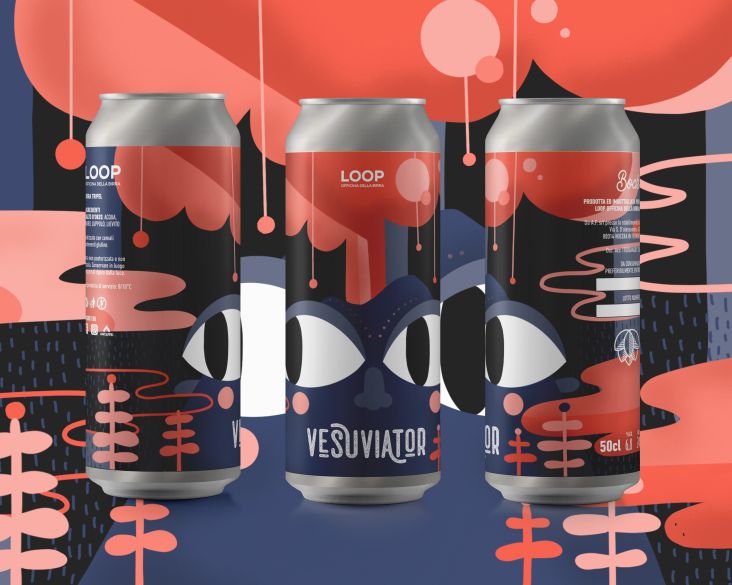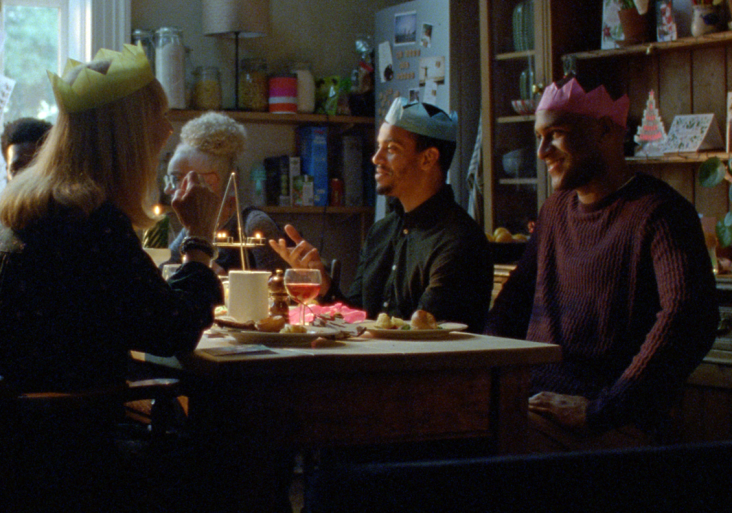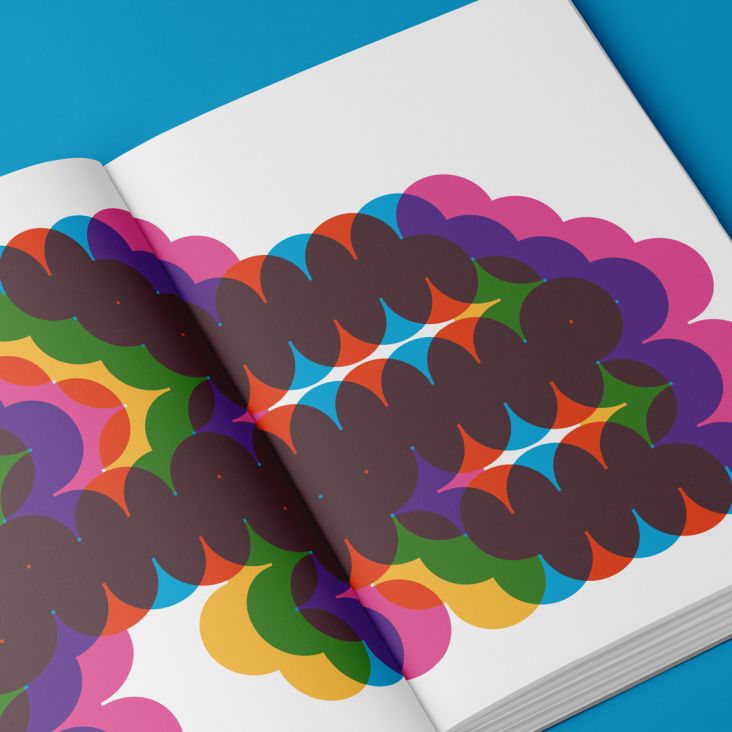How Chinese design and culture have influenced British art works, motifs and colour schemes
Be inspired by the artists and designers who are breaking new ground. Uncover the challenges that British Chinese people faced through the centuries, and why they have emerged as an important force in art and design.
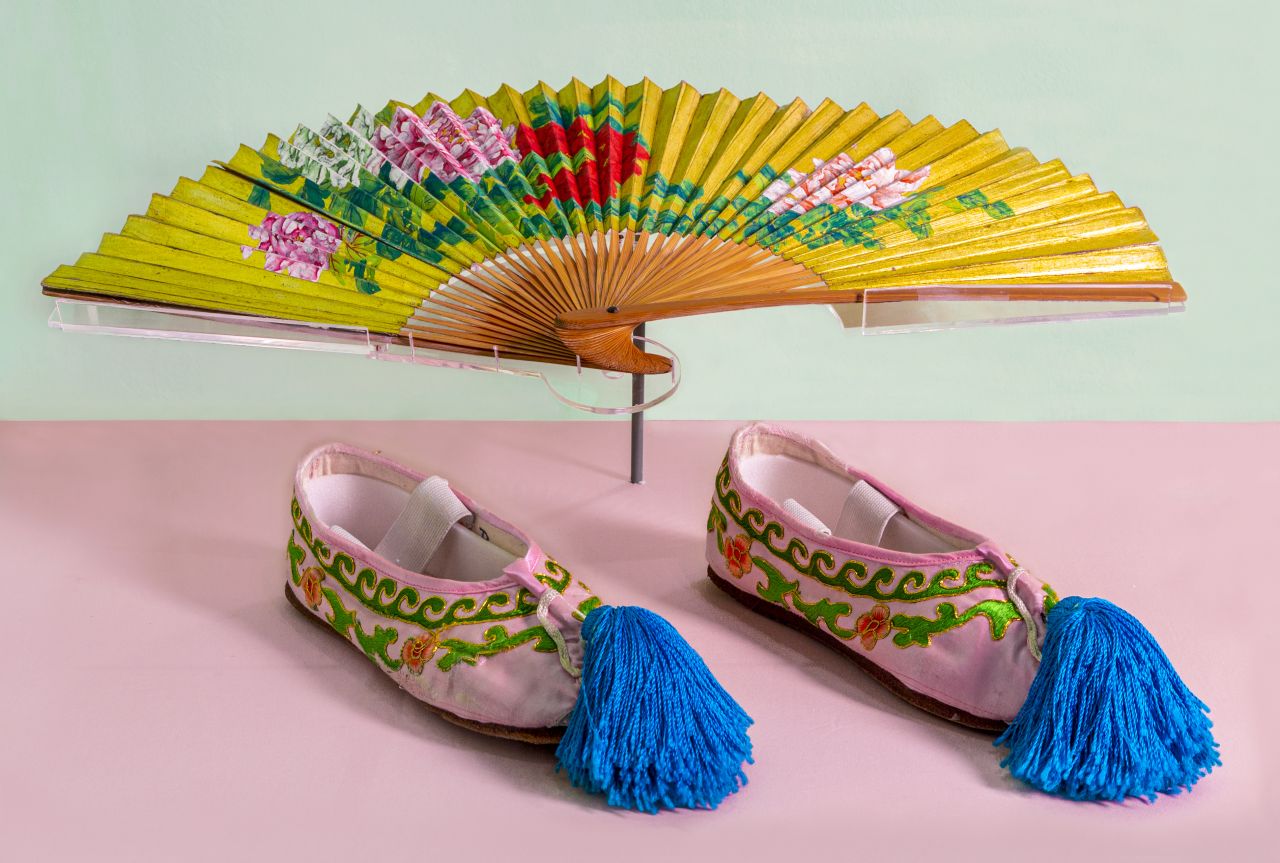
Chinese fan and slippers. Image: Kathy Hall, British Library
The influence of Chinese design on the West has been subtle, almost by osmosis, you might say, but we can see references in much of western art today. Britain has long had a magpie tradition of taking from the different cultures it has come into contact with in its colonial, imperial past.
Chinese communities have been in the UK for far longer than many people realise. Many came from mainland China as well as Southeast Asia and stayed to create a rich and diverse art and design influence in the UK.
The Chinese and British exhibition at the British Library explores this relationship, telling the story of the first people to arrive from China in the late 1600s to the first Chinatown being established in Liverpool during the 1850s. It celebrates the lasting impact of Chinese art and design, from cuisine to literature, sport, film, music and fashion.
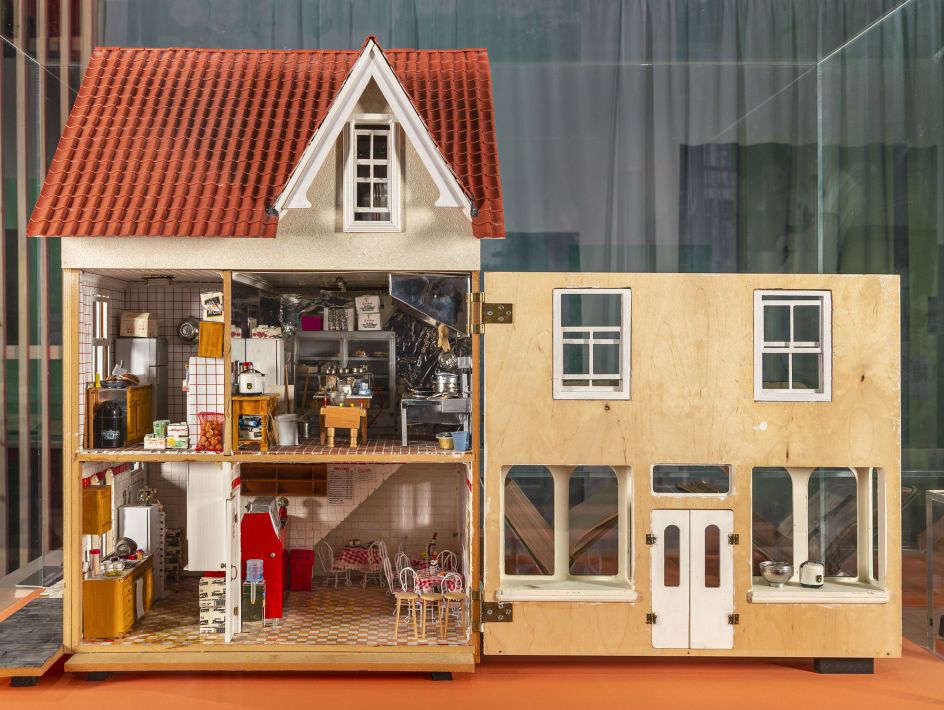
Doll's house created by Polin Law. Image: British Library
As Dr Lucienne Loh, reader in English Literature at the University of Liverpool and co-curator of Chinese and British exhibition, says: "Chinese and British at the British Library is an incredible opportunity to celebrate the diverse contributions to British society by under-represented communities through personal stories of survival and success."
An exploration of motifs, design and objects
The Chinese and British exhibition has many beautiful objects, including a hand-drawn map of China by Shen Fuzong, the first recorded person to visit the UK in 1687. There's also a beautiful fan made of bamboo slats and paper from mulberry bark from the province of Hangzhou. A classic Chinese design is the hand-embroidered shoes belonging to Kathy Hall, a practitioner of traditional Chinese opera. They are delightful, fun slippers in bright pink with green and red flower motifs; the final flourish comes in the shape of flamboyant bright blue tassels on the toes.
There's also the intriguing and forgotten trench art created by the Chinese Labour Corps in the First World War. The material was basically what there was plenty of – shell cases – and these items are decorated with ancient Chinese symbolism and iconography. 140,000 Chinese men assisted the British army after 1916 to clear the battlefields of shelling casings and also dead bodies. While they were there, to pass the time, they sculpted and engraved shell cases, as well as French francs found in the combat zones.
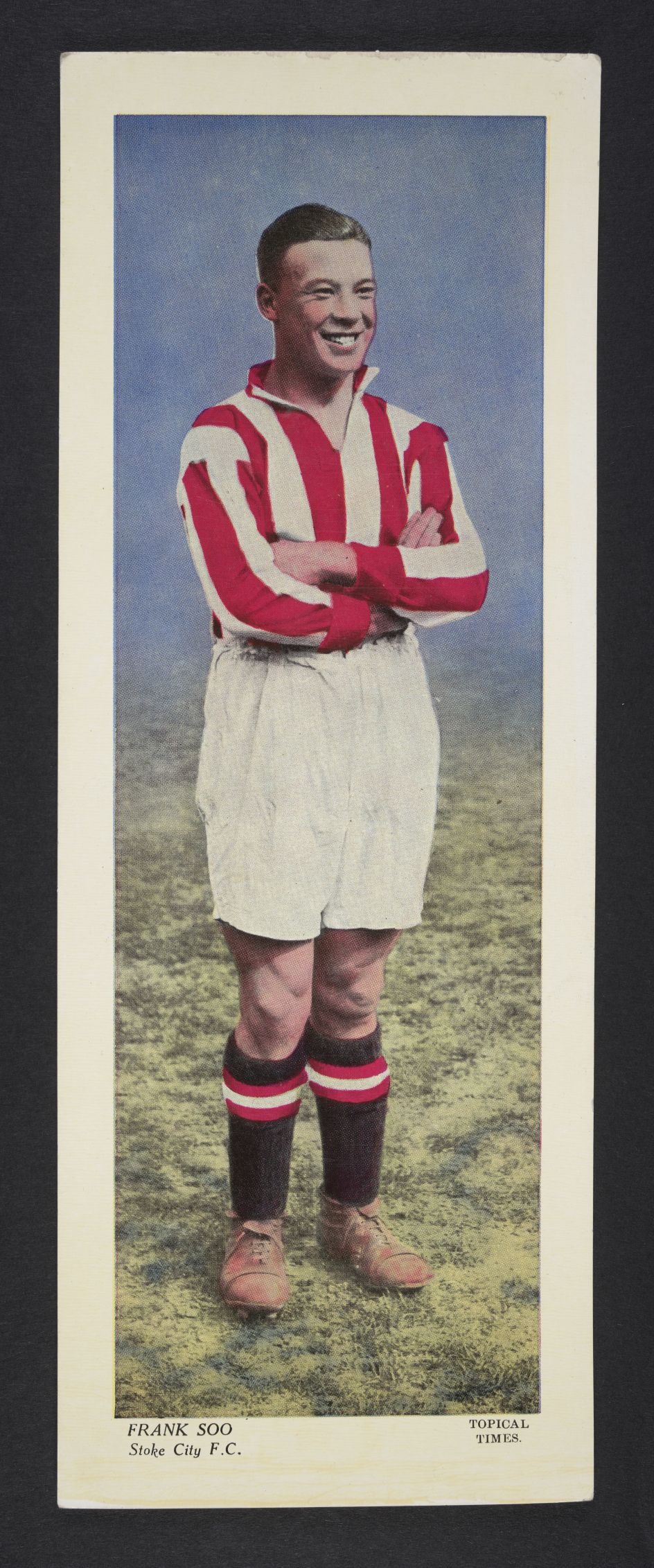
Frank Soo, first Chinese-British football player. Image: British Library
From the 1950s, a very popular pastime was collecting cigarette cards. There's a brightly coloured cigarette card of Frank Soo, the first player of Chinese origin to play in the English Football League. He was of mixed heritage, his father was a Liverpool-based Chinese sailor father, Ah Kwong-Soo, and his mother, Beatrice Whittam, was English.
One of the best-known tropes for the Chinese in Britain is the takeaway. Rosanna Lee's film Parallel explores this archetype and follows a family, which many Chinese (and also Westerners) will recognise as going for dim sum, filmed at the Pearl Dragon restaurant in Southend-on-Sea. Beautifully shot and interspersed with symbols such as the goldfish (which signifies surplus and wealth in Chinese culture) swimming through the film.
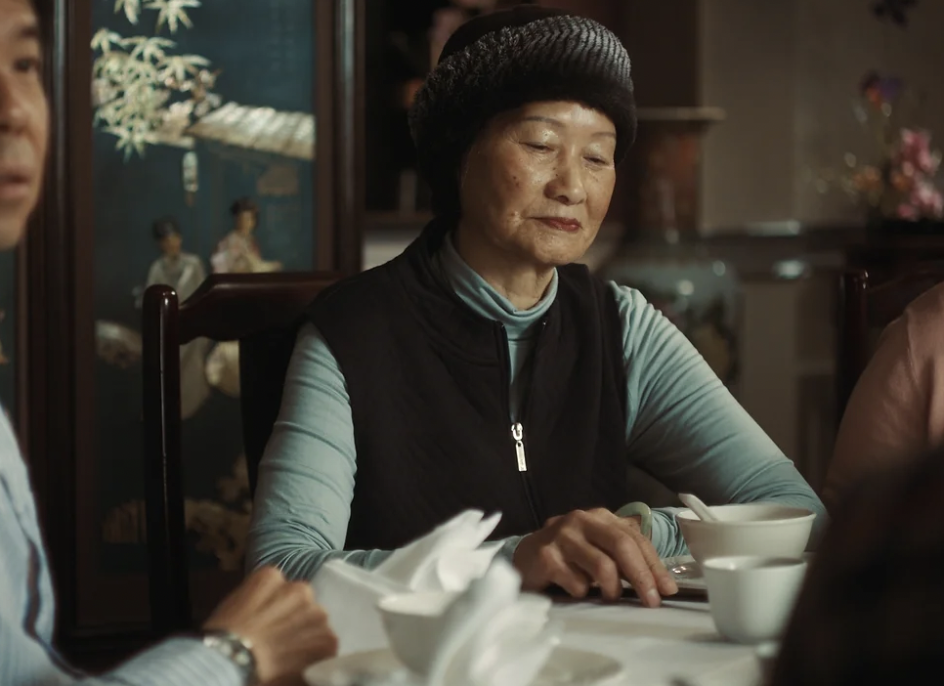
Still from Rosanna Lee’s film Parallel
The Chinese in Britain are probably best known for the takeaway. There's a wonderful doll house model of a Chinese takeaway, made by Polin Law, based on an actual family business. It's a bird's eye view into the interior world, replete with a restaurant on the ground floor and a kitchen fitted out with woks and rice cookers.
The 3D design of the exhibition was created by Chloë Leen, co-founder of Pup Architects. The Clapton-based practice's previous clients include the East End Women's museum, the V&A and the first exhibition held at the Design Museum, Fear & Love.
Creating the space "wasn't about creating anything historical or too culturally specific. It's about thinking that a lot of those design ideas are not really speaking to everybody within the British-Chinese community," Leen says. "It's very hard to neatly sum up the unity of one singular thing. We wanted to create a sense of neutrality and stay away from the expected."
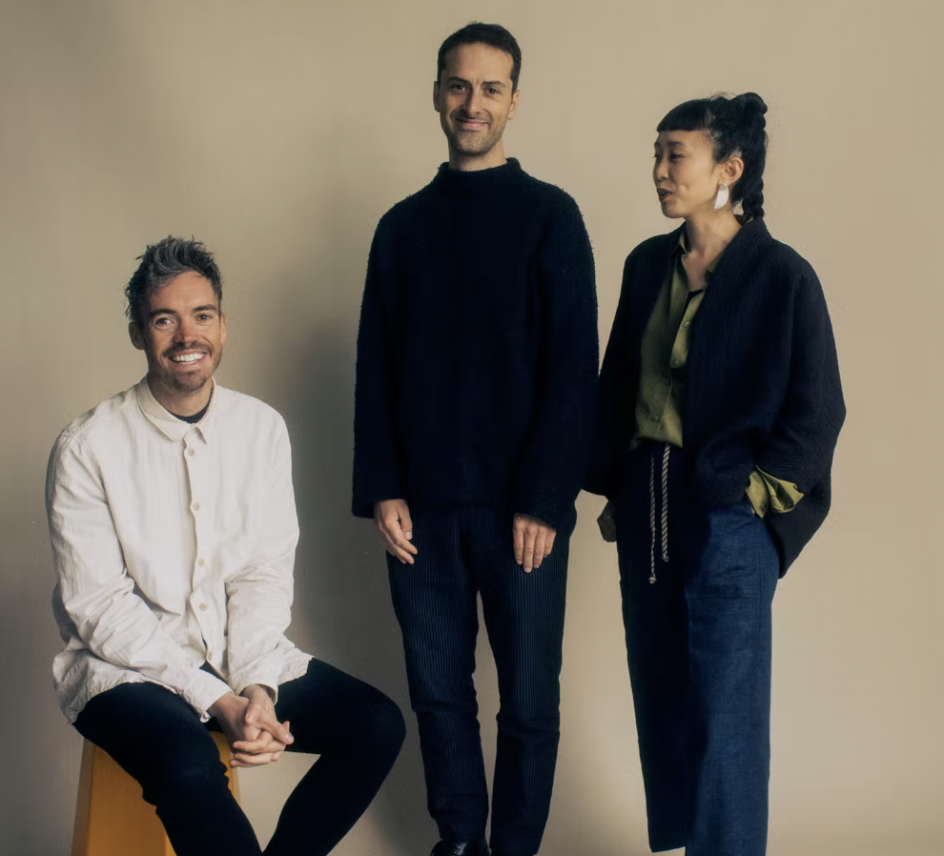
Chloë Leen (far right) co-founder of Pup Architects
The aim was to appeal beyond the Chinese community and for everyone to learn about the Chinese-British identity.
As a result, the space feels very light and contemporary. There are hints of red, symbolising luck, joy, and happiness. It also represents celebration, vitality, and fertility and is the traditional colour worn by Chinese brides to ward off evil spirits.
The translucent curtains, printed with black and white photographs, give an ethereal feeling of times past, yet still, be with us in the present. "It's about layering and transparency as well as overlaying with the graphics," suggests Leen.
For example, the subtle colours and patterns of pale turquoise, greens and pinks are as far away from the garish colours in Ming dynasty paintings. But the reference is closer to the ink and pastel water-based colour on paper or silk.
Leen says she wanted to bring lightness to the exhibition area. "Previously, the space was much darker. We wanted it to feel more open, and the colours are broadly in reference to the culturally specific objects and places."

















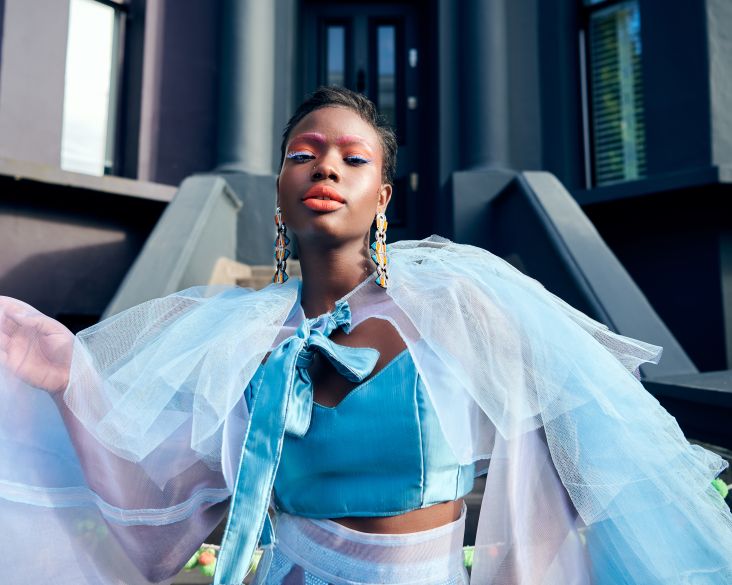
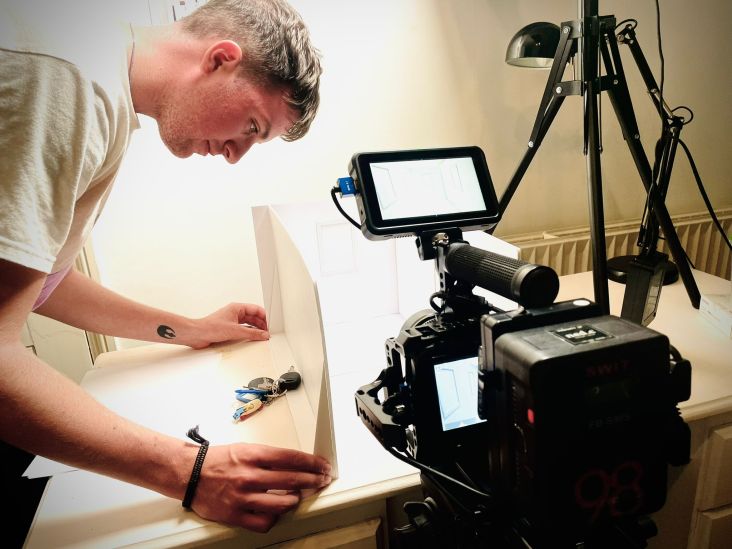
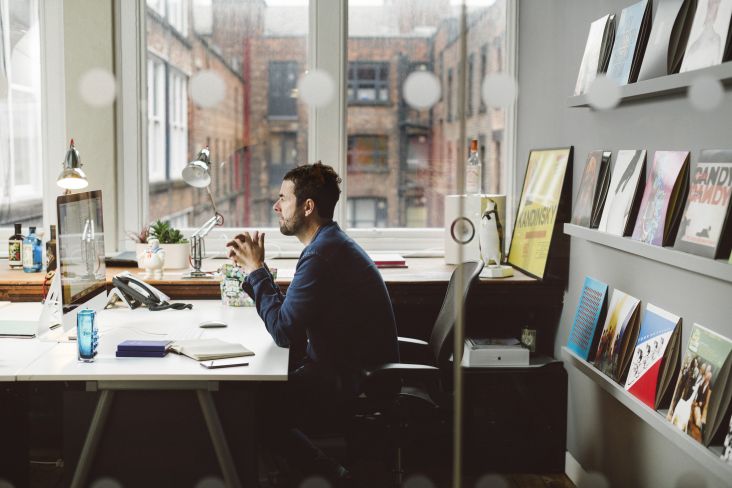
](https://www.creativeboom.com/upload/articles/a2/a2e7e26b0c2de5b87ce93ecd3be0c40ff157b2bd_732.jpg)
